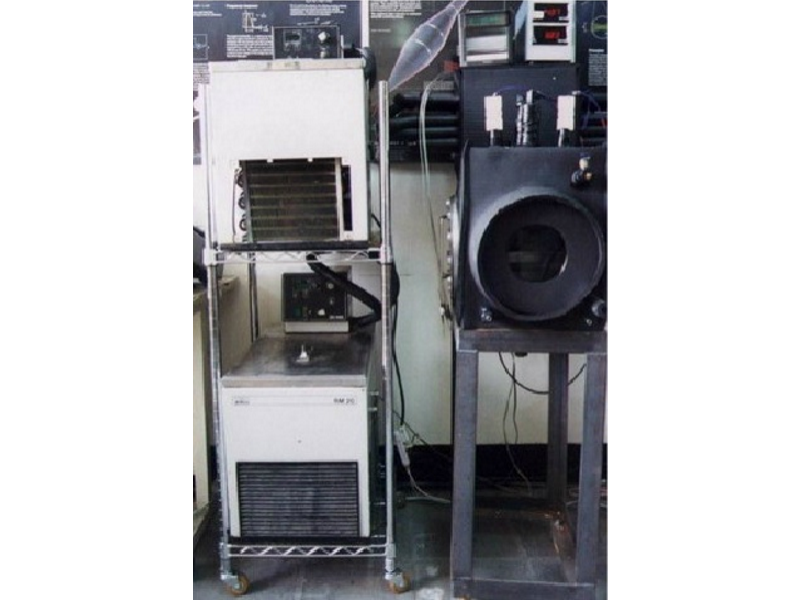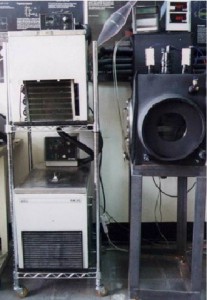The experimental apparatus for the study is shown in the picture. It consists rectangular container with the dimensions of 300×370×300 mm made from stainless steel, a stainless steel side panel provided with ports for electric wires, a pressure gauge and thermocouples, a vacuum pump, a reflux condenser, auxiliary heaters, and a test section support. Insulation was peripherally provided on the outside of the tank. The evaporator tube was designed to simulate a portion of a typical rod in refrigerant-flooded evaporator. It was fabricated from a copper tube. The testspecimen is soldered to a flange at one end of the tank. The copper tubes were 20 mm in outer diameter, with an innerdiameter of 12 mm. Each cartridge heater was 220 mm long with an actual heated length of 210 mm and 11.95 mm in diameter with a maximum power output 378W and was inserted into the copper tube. Thermal contact between the heater and the tube is enhanced by applying a two walled structure (Mgo + stainless steel) of heat sink compound on the heater before installing it in the tube. The text section included both smooth and treated surfaces. Experimental results can be seen from the photos, the abstract and the schematics of the measurements of the results.
Local Heat Transfer in a Rotating Square Channel With Jet Impingement
| Author Source Abstract |
S. S. Hsieh, J. T. Huang and C. F. Liu Journal of Heat Transfer, Transactions ASME v.121 n.4 Nov. 1999 pp. 811-818 The influence of rotation and jet mass flow rate on the local heat transfer coefficient for a single confined impinging round jet with a fixed jet-to-wall spacing of H/d=5 was studied for the jet Reynolds number from 6500 to 26000 and the rotational Reynolds number from 0 to 112,000. The local heat transfer coefficient along the surface is measured and the effect of the rotation on the stagnation (peak) point, local and average Nusselt number, is presented and discussed. Furthermore, a correlation was developed for the average Nusselt number in terms of the parameters of Rej and ReΩ. In general, the combined jet impingement and rotation effect are shown to affect the heat transfer response. Rotation decreases the average Nusselt number values from 15 to 25 percent in outward and inward radial flow, respectively. Finally, comparisons of the present data with existing results for multijets with rotation were also made. |

